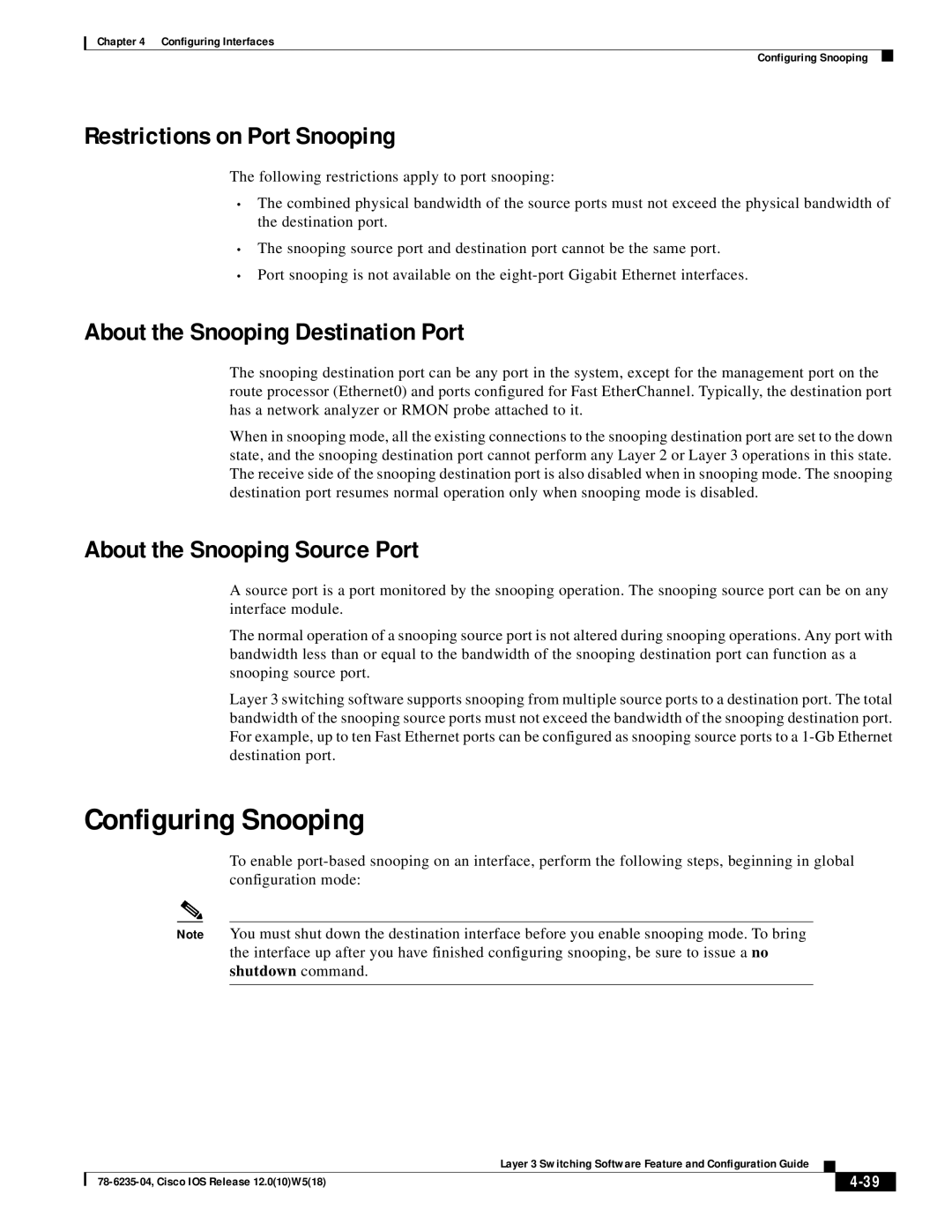
Chapter 4 Configuring Interfaces
Configuring Snooping
Restrictions on Port Snooping
The following restrictions apply to port snooping:
•The combined physical bandwidth of the source ports must not exceed the physical bandwidth of the destination port.
•The snooping source port and destination port cannot be the same port.
•Port snooping is not available on the
About the Snooping Destination Port
The snooping destination port can be any port in the system, except for the management port on the route processor (Ethernet0) and ports configured for Fast EtherChannel. Typically, the destination port has a network analyzer or RMON probe attached to it.
When in snooping mode, all the existing connections to the snooping destination port are set to the down state, and the snooping destination port cannot perform any Layer 2 or Layer 3 operations in this state. The receive side of the snooping destination port is also disabled when in snooping mode. The snooping destination port resumes normal operation only when snooping mode is disabled.
About the Snooping Source Port
A source port is a port monitored by the snooping operation. The snooping source port can be on any interface module.
The normal operation of a snooping source port is not altered during snooping operations. Any port with bandwidth less than or equal to the bandwidth of the snooping destination port can function as a snooping source port.
Layer 3 switching software supports snooping from multiple source ports to a destination port. The total bandwidth of the snooping source ports must not exceed the bandwidth of the snooping destination port. For example, up to ten Fast Ethernet ports can be configured as snooping source ports to a
Configuring Snooping
To enable
Note You must shut down the destination interface before you enable snooping mode. To bring the interface up after you have finished configuring snooping, be sure to issue a no shutdown command.
|
| Layer 3 Switching Software Feature and Configuration Guide |
|
|
|
|
|
| |||
|
|
|
| ||
|
|
|
|
